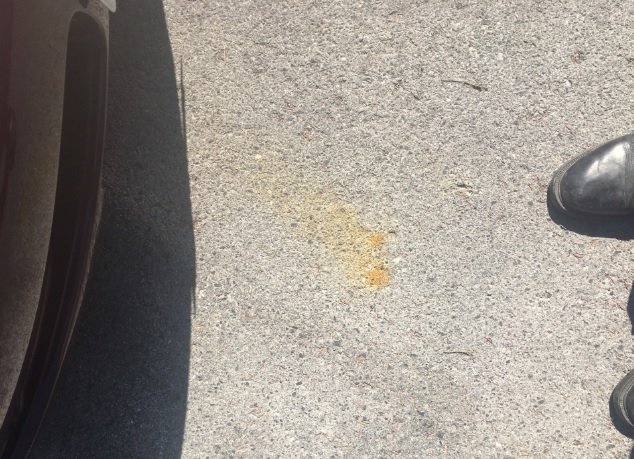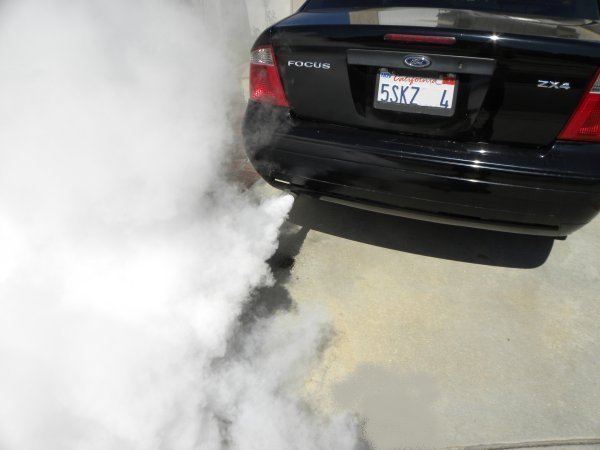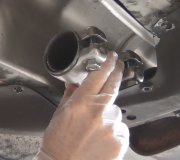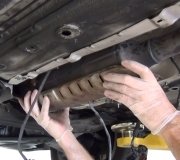Sunday, April 1st, 2018 AT 6:31 PM
Was driving at forty mph for about five minutes when I saw a lot of white smoke outside the rear window. The temperature gauge was at the three quarter mark so below the red zone. I pulled over and the temperature gauge went right back to normal. I turned off the car, opened the hood and saw a small amount of smoke for a few seconds. Had the car towed. The tow truck operator said it was likely the fan not coming on but the fan is working. The car was fully warmed up the next day and there was lots of white smoke coming out the tailpipe when the motor was revved. Since then it has been driven only short distances and not fully warming up, but a small amount of white smoke can be seen coming out the tail pipe. The oil dipstick and underside of the radiator cap show none of the "milkshake" appearance. The photo shows one of two yellowish deposits on the driveway that likely came from the tail pipe given their location. Is this most likely a head gasket leak? Given the worth of the car versus the repair cost would a head gasket sealant treatment be a good option? Would you recommend testing by a mechanic before going the sealant route? Thank you!




